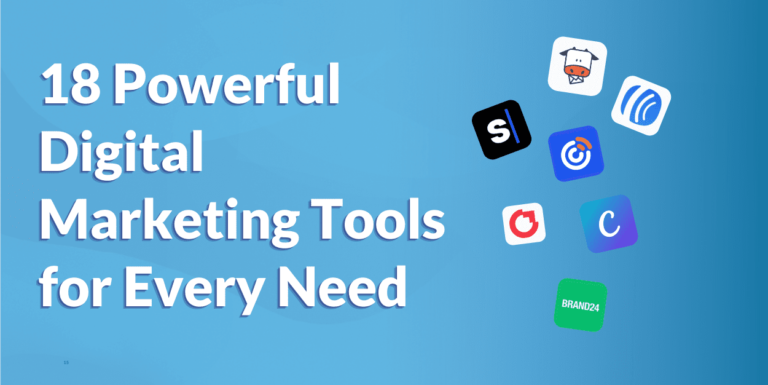How to shut down a business: The art of the graceful exit
Shutting down doesn’t always mean a business failed — sometimes it means the owners had the clarity to stop, regroup, and return stronger.
In this guide, we detail how to create a structured winding down process for startups and business to successfully shut down.
If you want to avoid penalties and reduce liabilities during this process, Sunset offers uncapped legal, tax, and operational support, all for a one-time flat fee, so you can simply move on to your next business without the hassle. And with NachoNacho, you can save 15% on Sunset’s wind-down services.
Table of contents
Why Do Startups and Businesses Shut Down?
There can be many reasons to shut down a business or a startup. Some of the most common include the following.
1. Lack of Product-Market Fit
The number one reason startups fail: the market just doesn’t want what they’re building — or doesn’t want it badly enough. Without solving a real pain point for a clear audience, even the best technology can go unused.
2. Running Out of Capital
Cash is oxygen for startups. If a business can’t raise new funding or reach profitability before the money runs out, it can’t keep operating — and in many cases, prolonged financial distress may even lead to bankruptcy, regardless of how promising it once looked on paper.
3. Poor Business Model or Unit Economics
Some startups generate lots of user growth but can’t figure out how to turn it into sustainable revenue. If your business loses money on every customer and doesn’t have a clear path to fix that, it’s often a matter of time.
4. Founder or Team Misalignment
Disagreements between co-founders, burnout, or leadership challenges can derail progress. Many early-stage companies fail not because of the product, but because the team behind it breaks down.
5. Legal or Regulatory Issues
In certain industries (like fintech, healthtech, or crypto), changing regulations or legal mistakes can force a company to shut down — even if demand is strong.
6. Market Changes or Macro Forces
Shifting market conditions — like a pandemic, a recession, or big changes in customer behavior — can render a business model obsolete almost overnight.
7. Failed Pivot or Strategic Mistakes
Startups often pivot, but some pivots come too late or steer the company away from its strengths. A poor strategic decision can stretch resources too thin or alienate the core customer base.
8. Acquisition or Asset Sale
Not all shutdowns are failures. Sometimes a company winds down operations because its team or technology has been acquired (acquihire), or because the founder is exiting on purpose to move on to something new.
9. Founder Burnout or Change in Priorities
Building a company is grueling. Some founders reach a point where they no longer want to keep going, especially if growth has plateaued. In these cases, winding down can be a thoughtful and healthy decision.
To make the shutdown process structured, thoughtful, and — above all — human. We help founders close their companies with clarity, legal confidence, and dignity. Because a well-managed ending is the beginning of your next chapter.
Determining when to shut down a company is one of the most difficult decisions a founder or leadership team can make. While perseverance is often seen as a defining trait of successful entrepreneurs, there are critical inflection points where continuing to operate a business may no longer be the most responsible or strategic choice. The following indicators may suggest that it is time to evaluate whether a structured shutdown is appropriate.
Signs It May Be Time to Wind Down a Business
Burnout with No Viable Path to Recovery
Sustained founder or team burnout — particularly when there is no clear path to alleviating it — can significantly impair the performance and future prospects of a business. When fatigue becomes chronic and motivation is depleted, the quality of leadership, decision-making, and execution often deteriorate. If repeated efforts to regain momentum have failed, it may be more prudent to wind down operations rather than risk deeper damage to personal well-being or team cohesion.
Inability to Raise Capital or Achieve Revenue Growth
Persistent difficulty in securing funding or generating sustainable revenue is a clear signal that the company may not have achieved product-market fit or may be operating within a constrained market. After multiple fundraising attempts or go-to-market strategies have failed, continuing to invest time and capital in the current trajectory may yield diminishing returns and increase financial risk.
Structural Shifts in the Market
Markets evolve, and not all shifts are temporary. Technological disruption, regulatory changes, or lasting changes in customer behavior can permanently alter the viability of a business model. If the external landscape has changed in ways that make the company’s offering irrelevant or significantly less valuable — and pivoting is not feasible — it may be time to consider a wind-down.
Founder Misalignment or Loss of Conviction
Alignment among founders and within the leadership team is critical for a company’s direction and resilience. When misalignment becomes irreconcilable or when key stakeholders no longer believe in the company’s mission or potential, the business often loses its strategic focus and internal momentum. A lack of conviction can be just as detrimental as a flawed business model, and in some cases, may justify a structured exit.
Continuing Would Cause More Harm Than Good
There are situations where remaining operational poses growing risks — legally, financially, or reputationally. Mounting liabilities, unresolved compliance issues, or deteriorating stakeholder relationships can compound quickly. When operating the business begins to create more damage than value, both internally and externally, a well-managed wind-down may protect the integrity of the founders, investors, and employees involved.
How to Shut Down a Business or Startup
Once you have made a decision, you need to consider the following elements to properly shut down a business.
Communication
Internal:
- Tell your team early: Be transparent and respectful.
- Offer support: Help with references, job searches, or severance if possible.
External:
- Inform investors: Send a professional update, share reasons, and outline the plan.
- Notify customers/partners: Give advance notice, especially if they rely on your product.
Customers
- Wind down services: Set a final date and ensure smooth transition/exit for users.
- Offer data export: Let them download data if applicable.
- Cancel subscriptions & auto-renewals: Avoid any accidental charges or disputes.
Legal and Financial Obligations
Depending on your situation, the legal and financial obligations may vary. But here are some of the most common legal and financial processes involved in shutting down a startup or business.
1. Close Financial & Operational Accounts
- SaaS Tools: Cancel all software subscriptions (e.g., project management, CRM, accounting tools).
- Cloud Services: Deactivate infrastructure (AWS, GCP, Azure), storage, and hosting services.
- Bank Accounts: Close business bank accounts once all payments are settled.
- Credit Cards: Cancel business credit cards to avoid unauthorized or forgotten charges.
- Payroll & HR Platforms: Notify your provider and ensure all final salaries, benefits, and paperwork are completed.
2. Settle Outstanding Debts and Obligations
- Vendors/Suppliers: Pay any outstanding invoices or renegotiate where appropriate.
- Employees/Contractors: Pay final wages, bonuses, unused vacation (if applicable), and issue final payslips.
- Loan Repayments: Address outstanding loans (e.g., bank loans, convertible notes, SAFEs), and communicate with lenders or investors about repayments or write-offs. If you’re unsure how much your outstanding obligations will affect your final cash position, using a Calculate Business Loan tool can help you estimate remaining payments, interest, and total obligations accurately before you close your books.
- Office Lease & Equipment: End lease agreements, return rented equipment, or sell assets to cover obligations.
3. Notify Tax Authorities & Fulfill Tax Obligations
- File Final Returns:
- Federal/State Income Taxes: Submit final tax filings, marking them as “final return.”
- Sales/Use Taxes: Report and pay any remaining sales tax liabilities.
- Payroll Taxes: Ensure all employer/employee tax withholdings and forms (e.g., W-2s, 1099s) are submitted.
- Deregister with Tax Authorities: Notify the IRS (or equivalent) and local tax departments of your closure.
- Cancel EIN (if applicable): If you’re in the U.S., you can notify the IRS that your EIN is no longer in use.
4. Dissolve the Legal Entity
- File Articles of Dissolution: Submit the appropriate dissolution form with your Secretary of State (or equivalent agency in your country).
- State-Specific Requirements: Some states require tax clearance or a final report before approving dissolution.
- Cancel Business Licenses & Permits: Contact local and state agencies to cancel registrations, licenses, and permits.
5. Distribute Remaining Assets
- Follow Legal/Operating Agreement: Allocate remaining cash or assets to shareholders/investors based on your company’s charter or operating agreement.
- Priority Order Matters:
- Creditors – Vendors, lenders, outstanding bills.
- Employees – Final compensation and obligations.
- Investors – Per liquidation preferences (if applicable).
- Founders & Shareholders – Whatever remains.
- Record the Distributions: Maintain documentation for any asset transfers, especially if they could have tax implications later.
How to Shut Down a Business Without the Hassle
Instead of handling all of the processes yourself, you can let Sunset handle all of the legal, tax, and operational burdens when winding-down a startup. This way, you can avoid common problems such as penalties and liabilities.
Check out Sunset and save 15% on wind-down services with NachoNacho.

Written by Andres Muñoz
If you would like to receive the latest deals added to NachoNacho, make sure you sign up for our newsletter below. We’re adding amazing software discounts you can’t miss!
Sign up for our newsletter






![Building a Website From Scratch Without Code [Guide]](https://blog.nachonacho.com/wp-content/uploads/2022/04/Building-a-Website-From-Scratch-Without-Code-Guide-768x274.png)
